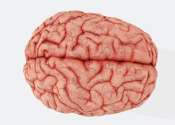Spike mutations that help SARS-CoV-2 infect the brain discovered
Scientists have discovered a mutation in SARS-CoV-2, the virus that causes COVID-19, that plays a key role in its ability to infect the central nervous system. The findings may help scientists understand its neurological ...
Aug 23, 2024
0
99









